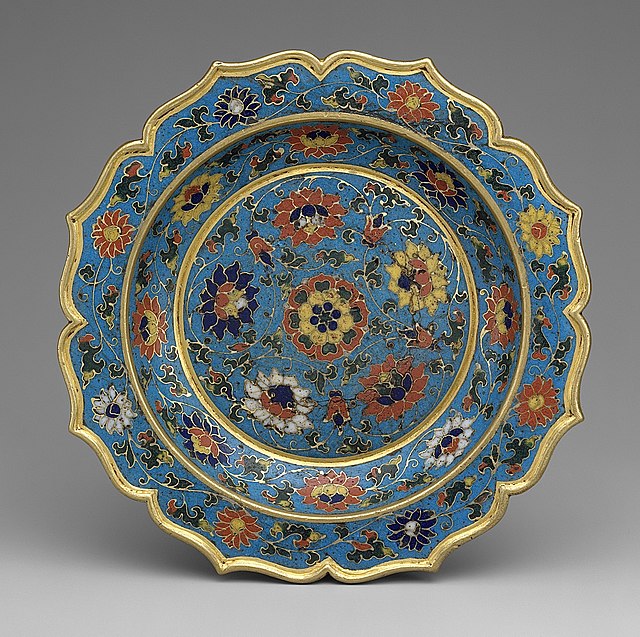The Stavelot Triptych is a medieval reliquary and portable altar in gold and enamel intended to protect, honor and display pieces of the True Cross. Created by Mosan artists—"Mosan" signifies the valley of the Meuse river—around 1156 at Stavelot Abbey in present-day Belgium. The work is a masterpiece of Romanesque goldsmith's work and is today in the Morgan Library & Museum in New York City.
Stavelot Triptych, Mosan, Belgium, c. 1156–58. 48×66 cm with wings open, The Morgan Library & Museum, New York City
Vitreous enamel, also called porcelain enamel, is a material made by fusing powdered glass to a substrate by firing, usually between 750 and 850 °C. The powder melts, flows, and then hardens to a smooth, durable vitreous coating. The word vitreous comes from the Latin vitreus, meaning "glassy".
Gothic châsse; 1185–1200; champlevé enamel over copper gilded; height: 17.7 cm (7.0 in), width: 17.4 cm (6.9 in), depth: 10.1 cm (4.0 in)
Chinese dish with scalloped rim, from the Ming dynasty; early 15th century; cloisonné enamel; height: 2.5 cm, diameter: 15.2 cm
Staffordshire Moorlands Pan, 2nd-century Roman Britain
Detail of painted Limoges enamel dish, mid-16th century, attributed to Jean de Court





